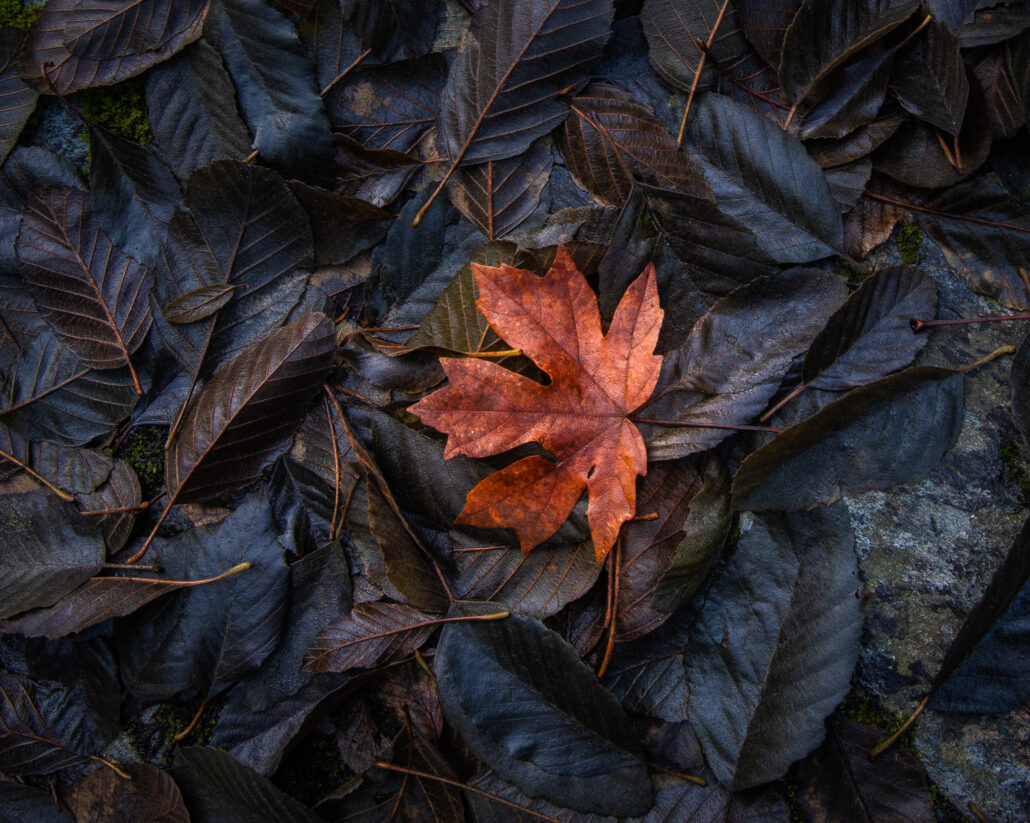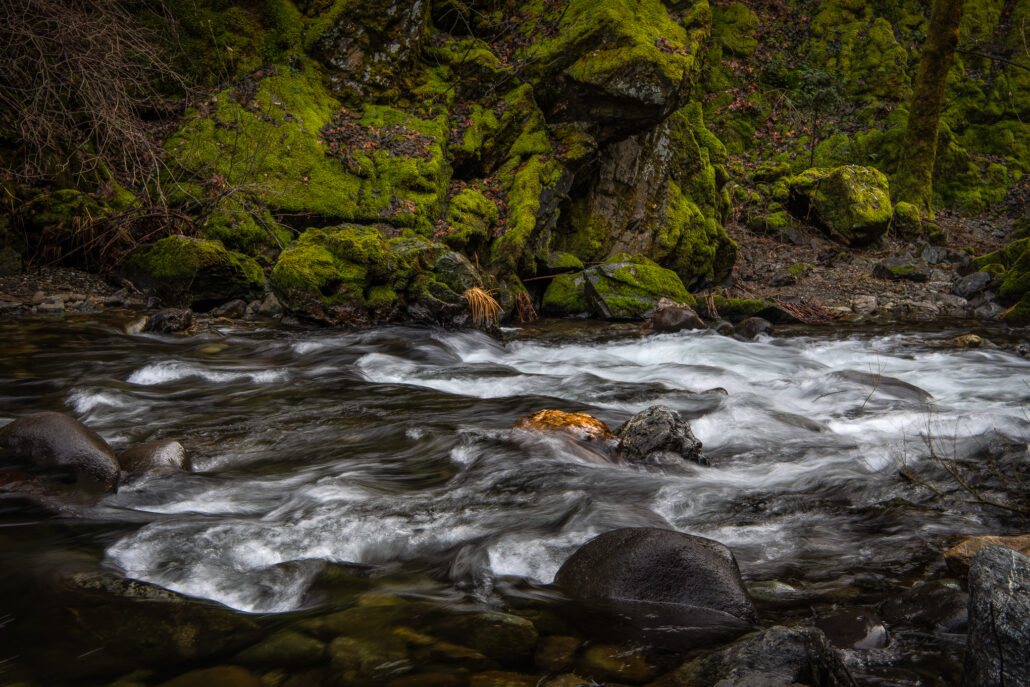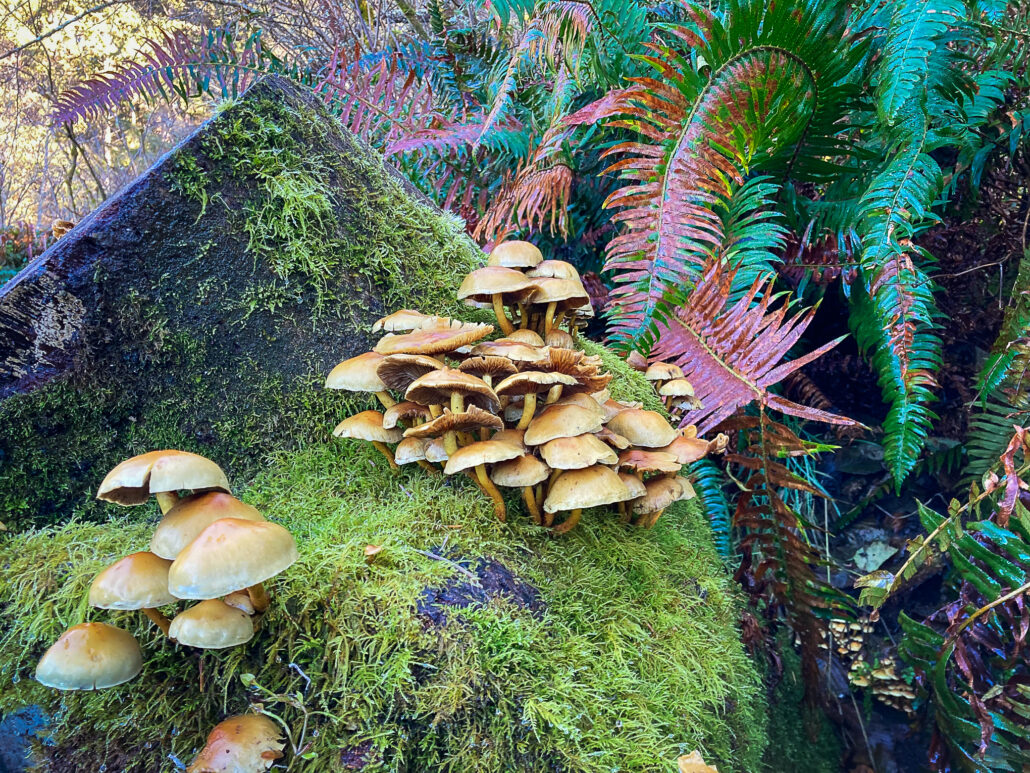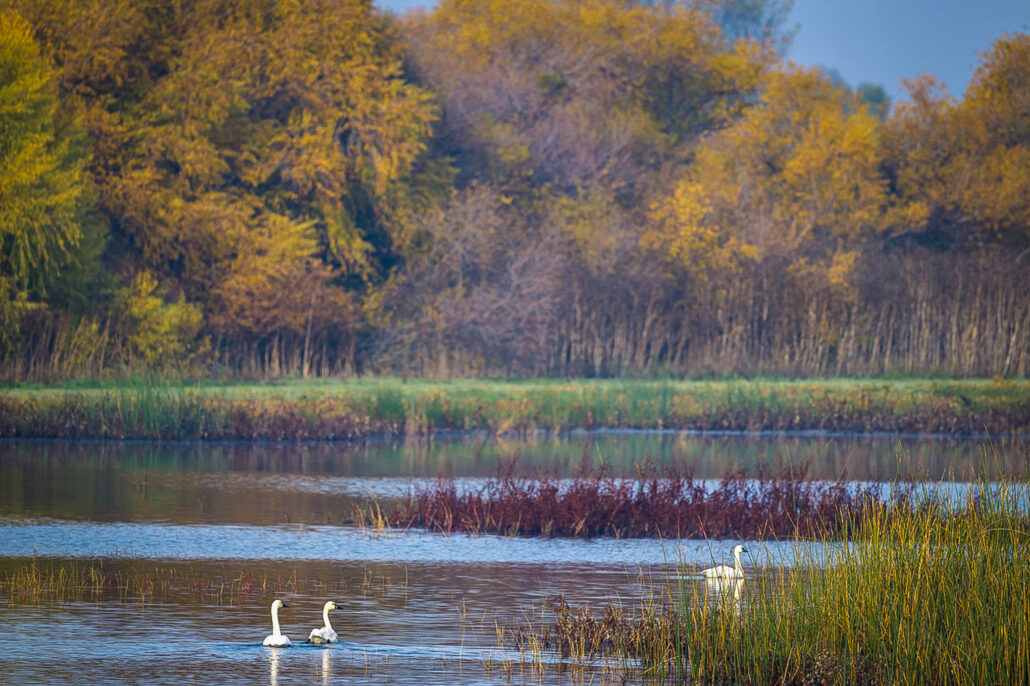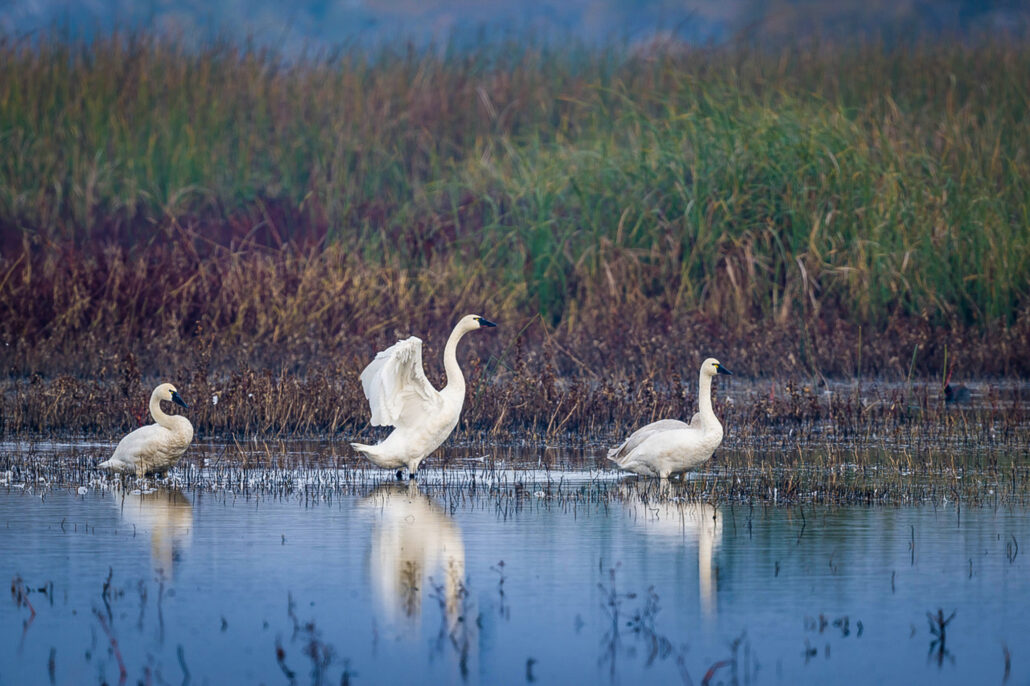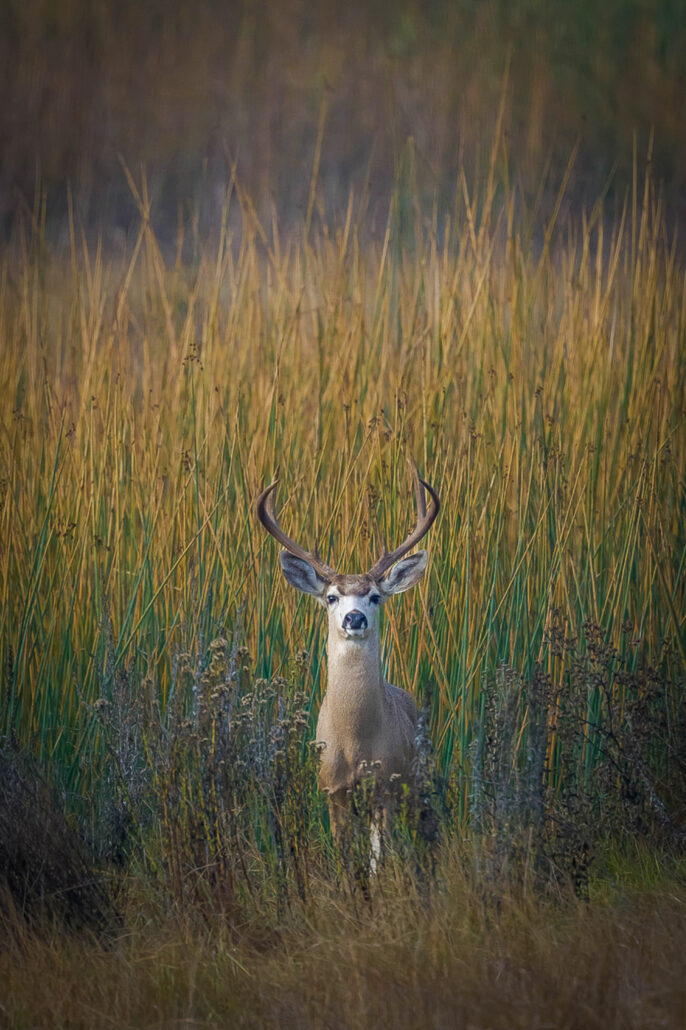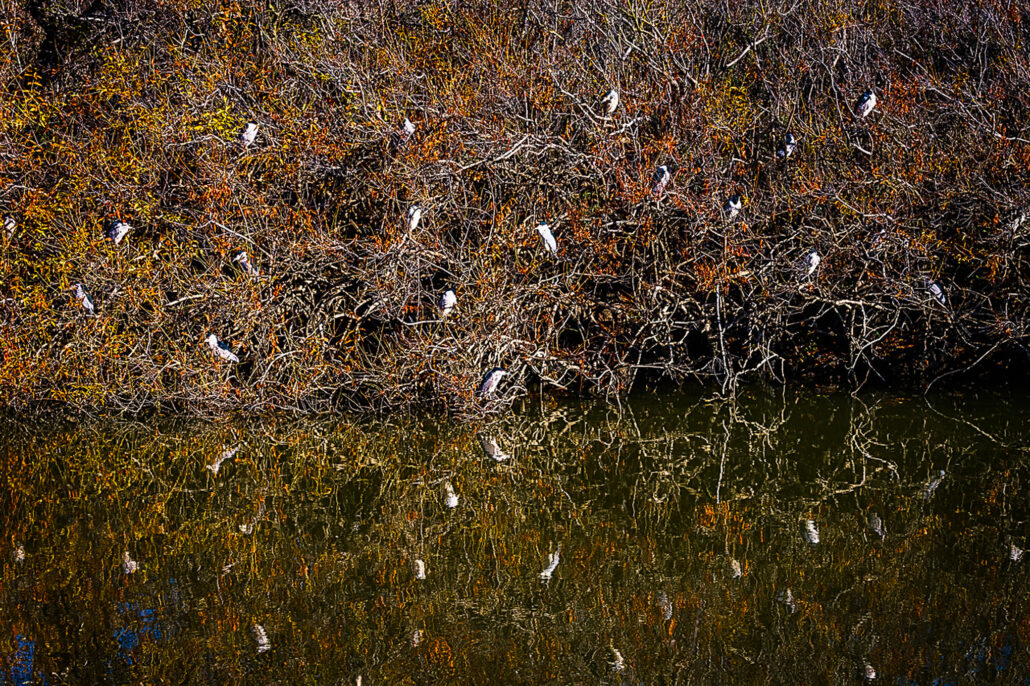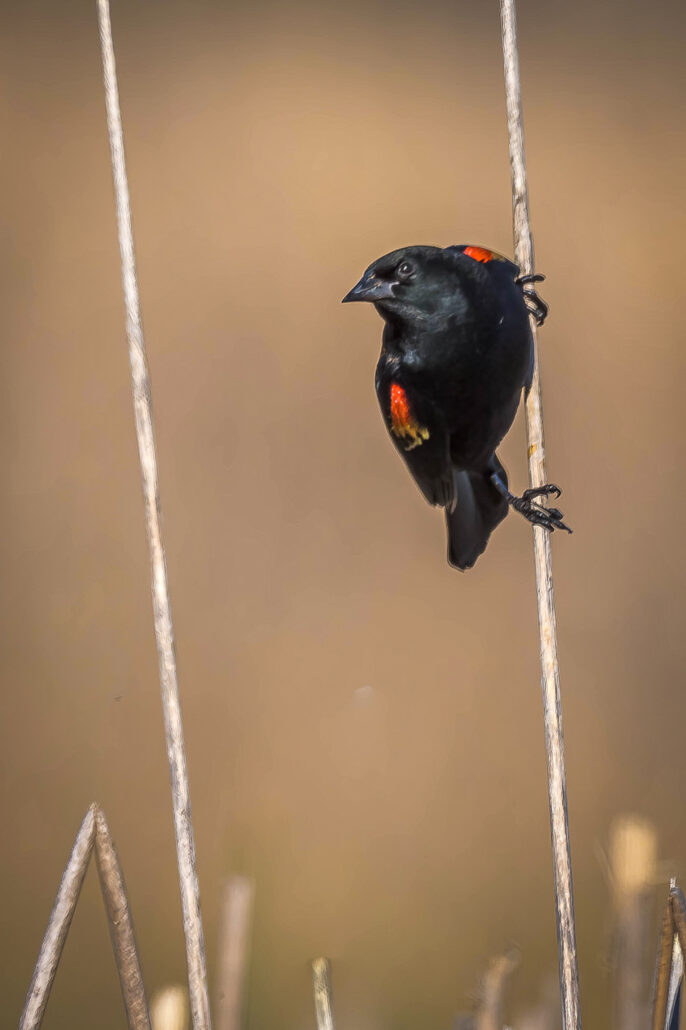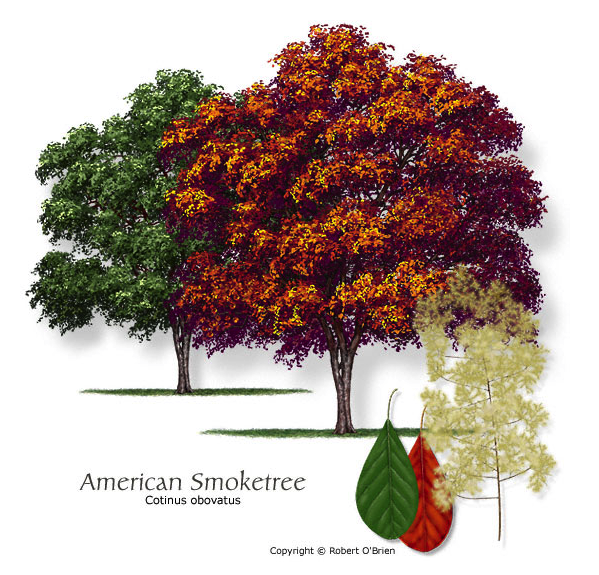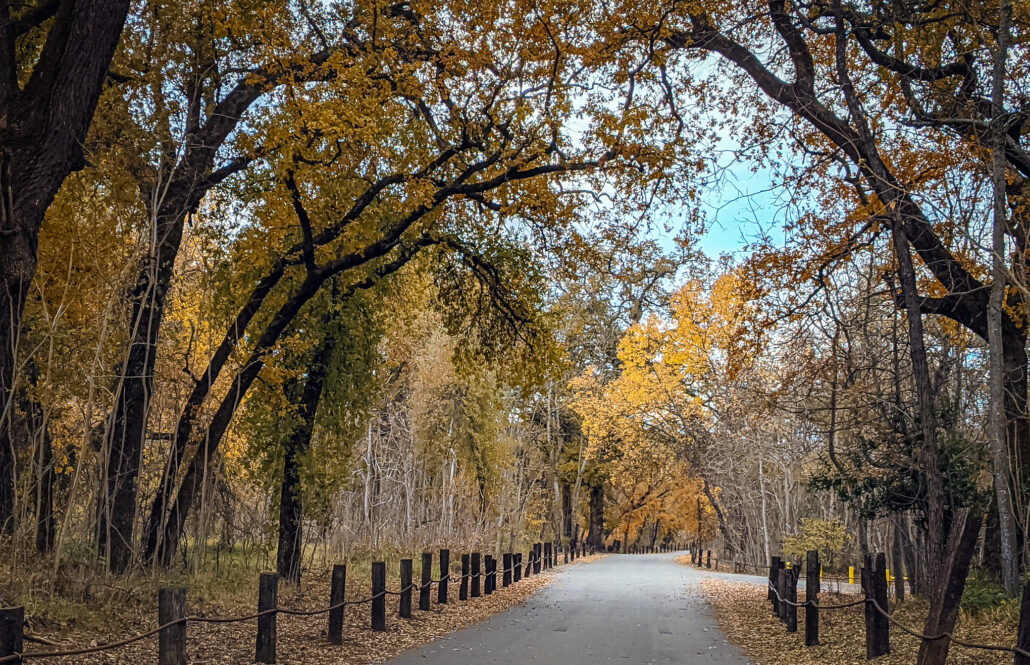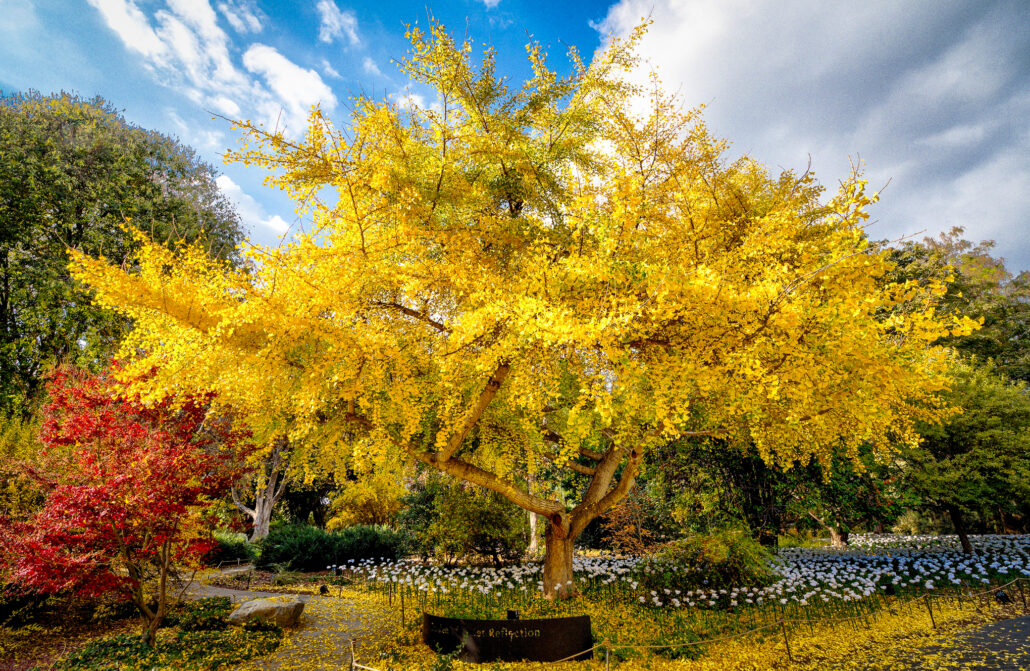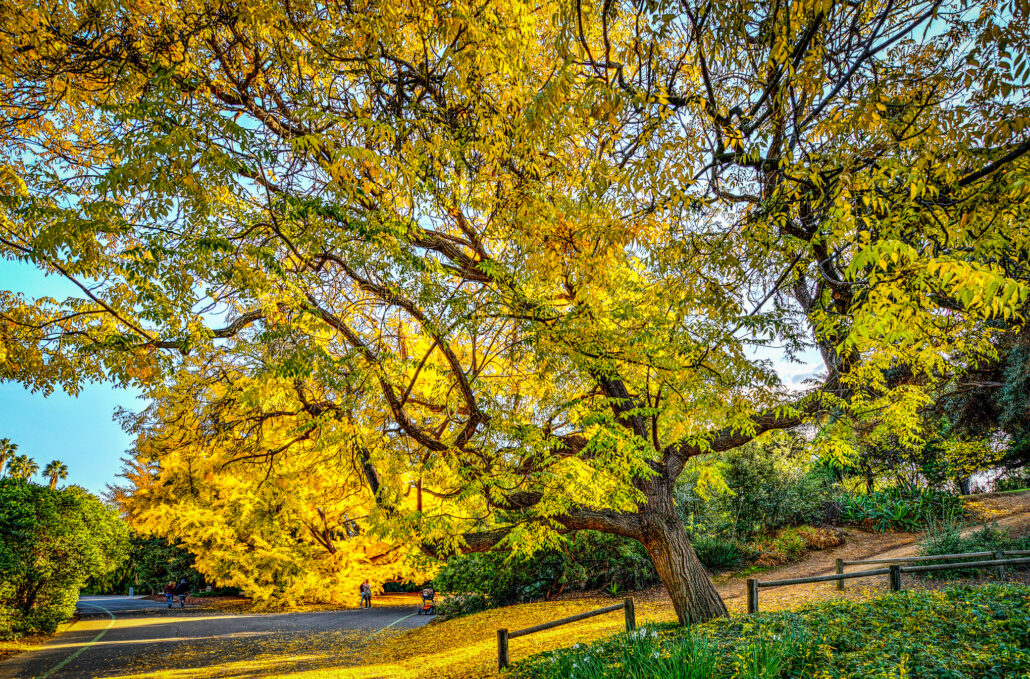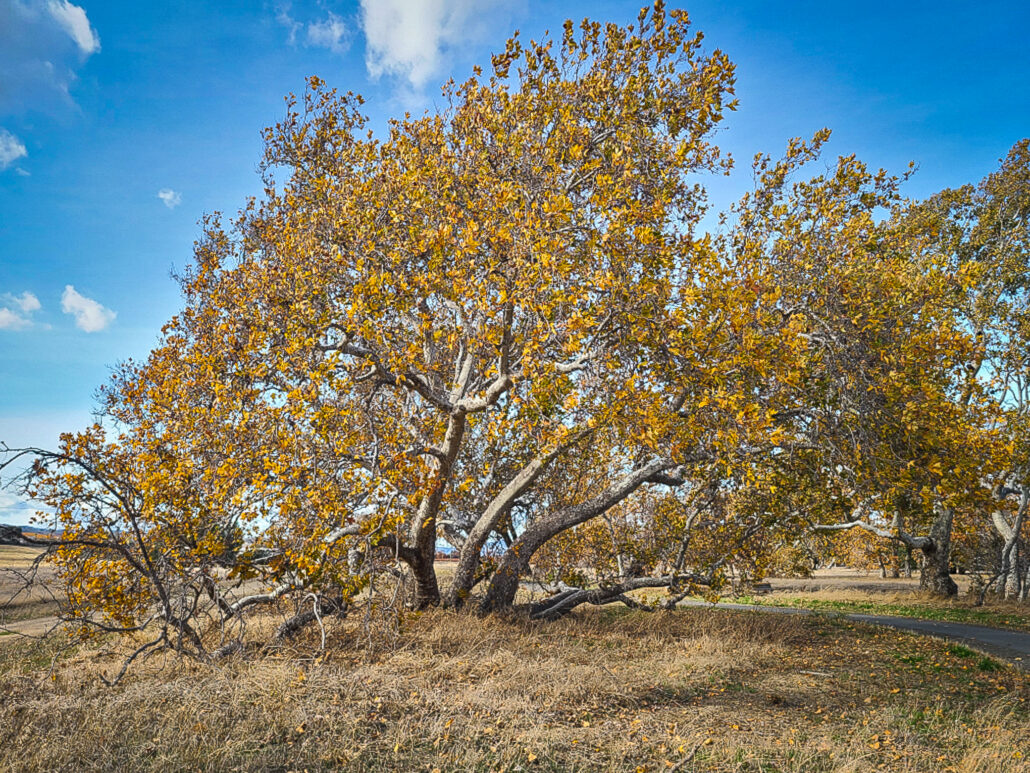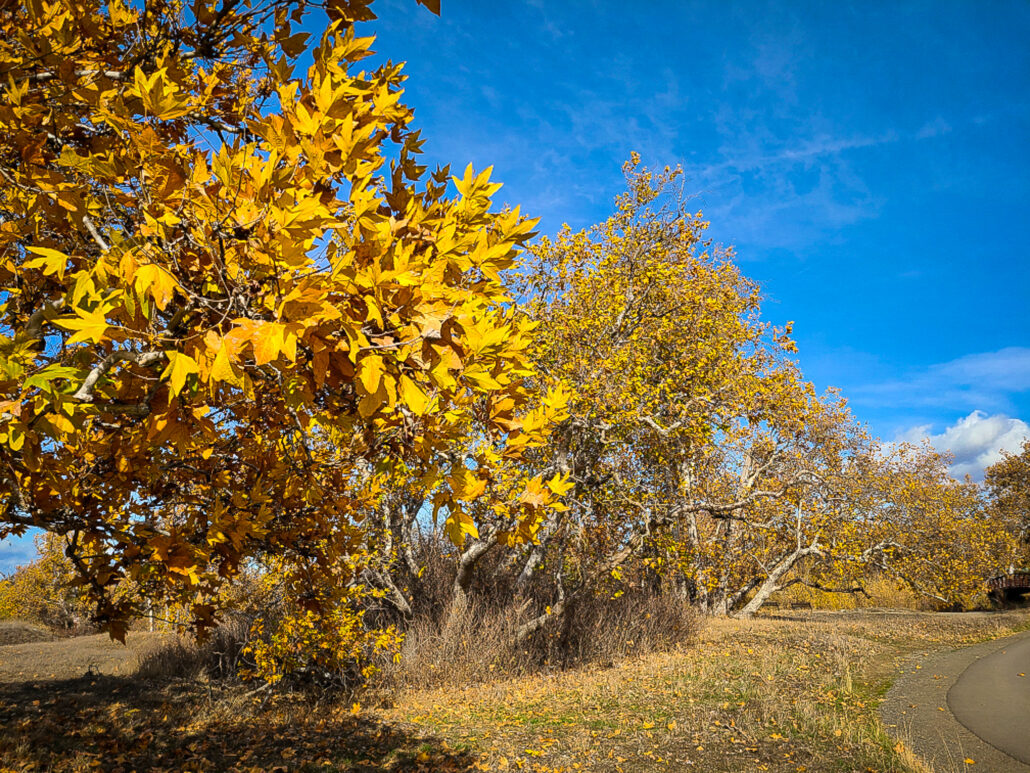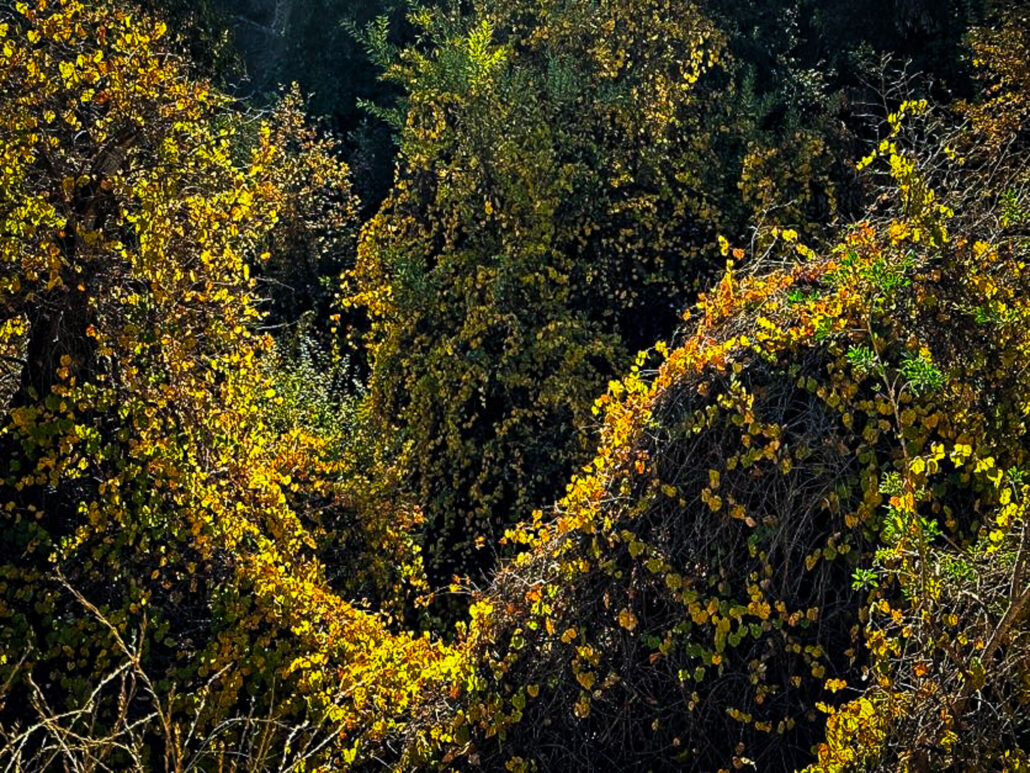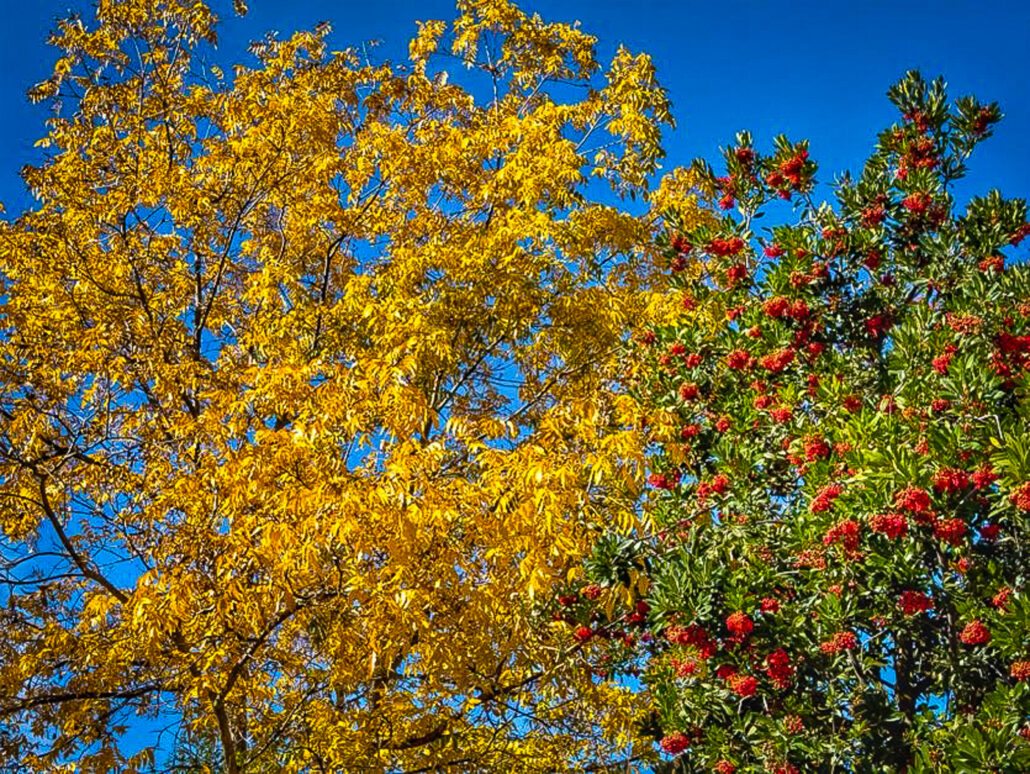Last Vestiges
In search of snowy fishing holes, Davis color spotter Philip Reedy and John, a fishing companion, drove along Highway 32 from Chico to Deer Creek. They returned through the Forks of Butte Creek Recreation Area.
There, they found last vestiges of autumn color. Trees were bare and leaves spent. Fall color littered the forest floor as decaying detritus. Orange-brown maple and blackened alder leaves provided morbid contrast to vibrant mosses that flocked a rocky face above the creek.
For his fortitude, Reedy scored the last First Report of autumn at the Forks of Butte Creek Recreation Area, an area not previously reported here. He also posted the final fall color report of Autumn, 2022.
- Forks of Butte Creek Recreation Area (2,000′) – Past Peak, You Missed It.
Going, Going …
Peaking fungi are all that’s left of fall color at Sue-meg State Park in Humboldt County. Regardless, color spotter Michelle Pontoni wrote, “This is the perfect time to enjoy the best of California’s north coast.
She says that in early December Humboldt County days are often cloudless, mild and the landscape deserted, making the last days of autumn an ideal time to visit. We recommend watching weather forecasts closely and picking an open window of clear weather along the north coast for this experience.
If you’re unfamiliar with the state park, Sue-meg is the new/old name of what used to be Patrick Point SP. The local Yurok people had always called the location that, but the park got named Patrick Point – the local name – when it was brought into the state park system in the 1930s.
A Yurok village was recreated there in the 1990s and named “Sumêg” to honor the ancient name associated with the site. Recent efforts to honor traditional names included returning Sue-meg as the description to this location.
Sue-meg SP is a few miles north of Trinidad and south of Prairie Creek Redwoods SP and Redwoods NP, so there’s lots to see in the area, if not much fall color, which is now … gone.
- Sue-meg SP, Trinidad (174′) – Past Peak, You Missed It.
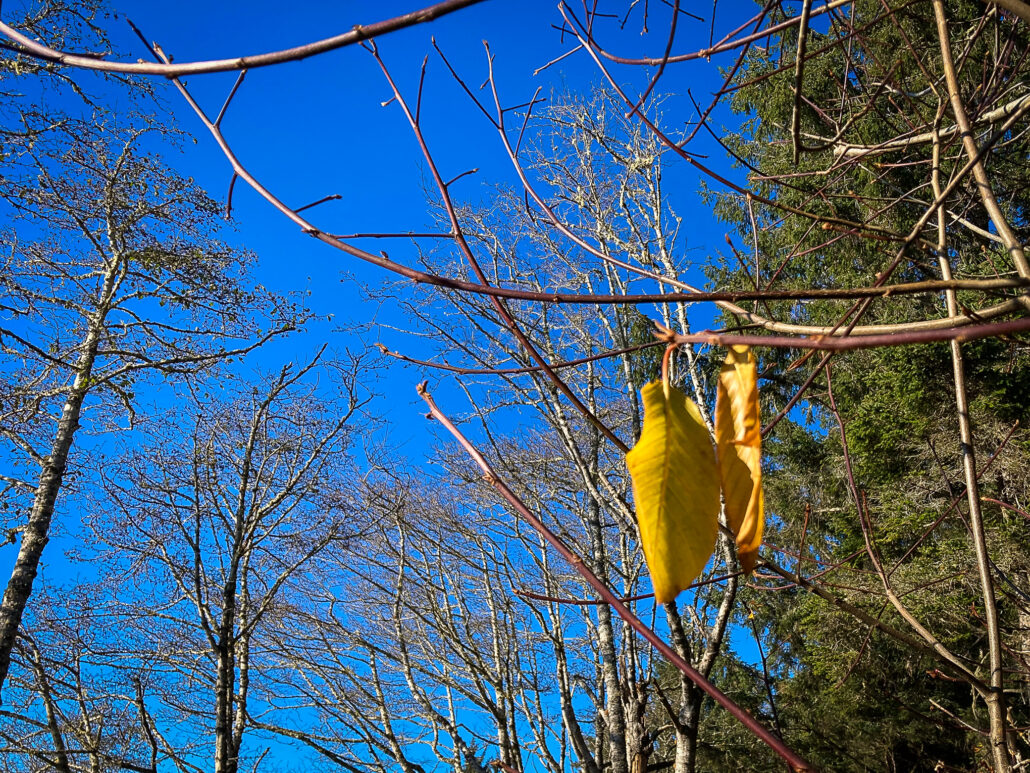
Chasing Water
The combination of drought and water not being released by water agencies, has migratory birds chasing water.
They found it at the the San Luis National Wildlife Refuge near Los Banos yesterday, and Mark Harding found them.
Since this article was first posted, Harding reports that the Sacramento and Colusa NWRs are again wet, and snow and Ross’ geese, heron, wigeon, pintail and mallard ducks are in residence.
Late autumn color is dressing oak, cottonwood and willow. It’s peak in California’s Central Valley.
- San Luis NWR, Los Banos (115′) – PEAK (75-100%) GO NOW!
Texas Peaks
The internet has been abuzz with reports of an unexpected December display of peak fall color in north and central Texas.
The Texas A&M Forest Service had predicted fall colors to be muted this year, due to drought. Though, a wet August is said to have given new vibrance to Texas’ show.
Photographs on the Web show dark red, carnelian, orange and gold trees. Many species are contributing to the display, including such Texas natives as American smoketree, bigtooth maple, Graves oak, Huisache, Possumhaw, Prairie sumac, Texas redbud, Texas red oak and white ash.
To see what they’re reporting in Dallas, CLICK HERE.
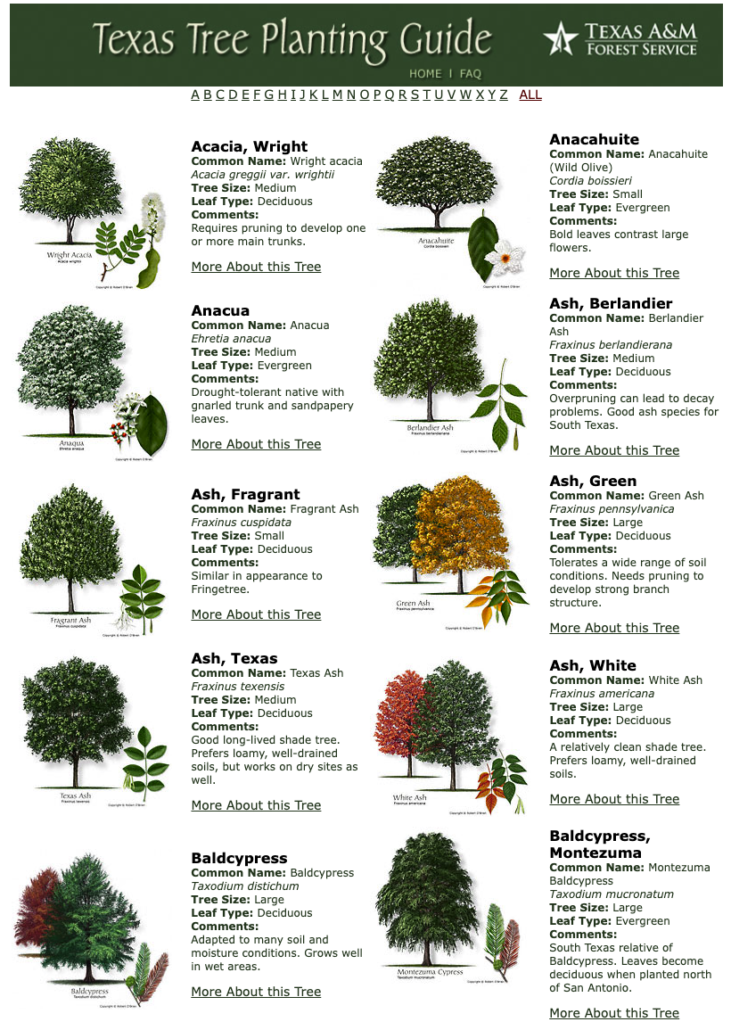
One Last Look
Northern California was still lovely last week. However, after today’s lashing of wind, rain and lightening, much of it is gone.
Ryan Boyd sent this last look at what he saw a week ago along the Lower Sacramento River and in the Livermore Valley.
- Livermore Valley (495′) – Past Peak, You Missed It.
- Lower Sacramento River (433′) – Past Peak, You Missed It.
Jurassic Park
A real Jurassic Park exists in Southern California, one where you can see living remnants of the Jurassic period. It is the Los Angeles County Arboretum and Botanic Garden in Arcadia.
It qualifies as a true Jurassic Park because of the spectacular Gingko biloba trees that inhabit it. Dating back 170 million years to the middle Jurassic period, the Gingko is one of the world’s oldest and most amazing trees.
It was one of the first trees to be cultivated. Though it has existed throughout all human history, it continues to fascinate us for its beauty – for sure – but also for the astounding things we continue to discover about it.
GigaScience reports a team of Chinese scientists found that with some 41,840 predicted genes, the gingko is known to have a considerable number of antibacterial and chemical defense mechanisms, making it highly resistant to disease and infestation.
They are so hearty that six trees growing within 2 kilometers of the atomic blast at Hiroshima were among a few living organisms to survive it. Some gingkos are known to have lived over a thousand years.
BBC News tells us that the Gingko has a genome numbering 10.6 billion DNA nucleobase letters. In comparison, the human genome has but three billion. While gingkos have been used in Chinese medicine since at least the 11th century, few gingko-related remedies have been authenticated by Western medicine, the U.S. National Institutes of Health state.
Of course, what attracts us is not its science, but its beauty. Gingko leaves have long been symbols of artistic perfection, and Frank McDonough’s images of peaking gingkos support that premise.
- LA County Arboretum and Botanic Garden, Arcadia (482′) – PEAK (75-100%) GO NOW!
Sycamore Grove Park
As seen in this and the previous post, California sycamore are at peak both in northern and southern California. I’d asked East Bay color spotter Salil Bhatt to visit Sycamore Grove Park in Livermore, and he reports the sycamore as slightly past peak, noting they were probably their best during Thanksgiving week or the week prior.
Southern California sycamore are trailing by a week, which is worth noting for future visits.
Note the distinctive multi-stemmed, weathered trucks of California sycamore. At perfection, they are sculptural in form. The leaves depicted in these images are uniformly golden, though other examples in the Santa Monica Mountains NRA have combined burnt sienna, gold, yellow and raw umber, wonderously.
Salil reports that, “Fall has progressed rather quickly over the Thanksgiving weekend in the East Bay. As late as Thanksgiving day, the colors were just cresting peak and when I got back from my weekend trip – many of the trees had already dropped their leaves. The remaining have leaves that have taken on a more muted brown. There is still color to be found, particularly in the native cottonwood and some oak species but the area as a whole is rapidly approaching past peak.
- Sycamore Grove Park, Livermore (495′) – PEAK to Past Peak, GO NOW, You almost missed it.
Sycamore Canyon
Q. What does the Botanical Information Consultant of the Los Angeles County Arboretum and Botanic Garden do on his day off?
A. He looks at trees.
What Frank McDonough did this past weekend can only be described as a busman’s holiday. He hiked Sycamore Canyon in Whittier on a day off, and when he came upon magnificent examples of California wild grape (Vitis californica), Toyon (Heteromeles arbutifolia), Southern California black walnut (Juglans californica), Frémont cottonwood (Populus fremontii) and California sycamore (Platanus racemosa), he had the presence of mind to photograph and share what he found.
For that, Frank earns a First Report for Sycamore Canyon and our thanks.
Sycamore Canyon is a 3.3-mile out-and-back trail with a gain of 331 feet. It’s considered to be an easy hike. McDonough reported peak fall color throughout much of the trail, making it California Fall Color’s Hike of the Week.
Today, I spoke with Soumya Karlamangla, California correspondent to The New York Times. She observed that Southern California’s autumn color seems more iridescent and apparent than in previous years. She noted seeing vibrant vineyards near Santa Barbara this past week and said several of her SoCal friends believe this autumn stands out from previous years for its brilliance. She asked if we have any explanation.
I replied that this autumn has benefitted from mild weather (few storms and light breezes) that allowed foliage to retain their fall color. Cool nights and warm days have also combined to intensify color change. This has been common statewide.
Presently, both Los Angeles County and the San Francisco Bay Area are showing beautiful color, as McDonough has illustrated in his photos of Sycamore Canyon and the LA County Arboretum and Botanic Garden in Arcadia.
- Sycamore Canyon, Whittier (318′ – 945′) – PEAK (75-100%) GO NOW!
Golden Coins
Julie Kirby reported this weekend from this magical spot in Descanso Gardens. As she said, “Like golden coins, the gentle breeze provided a continuous veil of leaves wafting to the ground. People stopped to take family photos on the bench at the tree’s base. One couple reported they take an annual photo there. Maybe it will be their Christmas card.”
The spot was peaking when she took the photo on Nov. 26 and the leaves were raining down.
- Descanso Gardens, La Canada-Flintridge (1,188′) – PEAK (75-100%) GO NOW!


